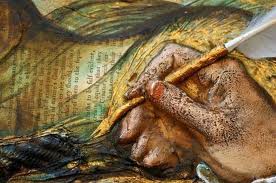Alfred Stevens
(1823 – 1906)


Alfred Émile Léopold Stevens was a Belgian painter.
Alfred Stevens was born in Brussels. He came from a family involved with the visual arts: his older brother and his son Léopoldwere painters, while another brother – Arthur, was an art dealer and critic.His father was an art collector who owned several watercolors by Eugène Delacroix, among other artists. His mother’s parents ran Café de l’Amitié in Brussels, a meeting place for politicians, writers, and artists.
He studied at the Académie Royale des Beaux-Arts in Brussels, where he knew François Navez, the Neo-Classical painter and former student of Jacques-Louis David. There, he drew from casts of classical sculpture for the first two years, and then drew from live models. Later he was admitted to the École des Beaux-Arts, the most important art school in Paris.
Stevens’s work was shown publicly for the first time in 1851, when three of his paintings were admitted to the Brussels Salon. He was awarded a third-class medal at the Paris Salon in 1853, and a second-class medal at the Universal Exposition in Paris in 1855.
During the 1860s, Stevens became an immensely successful painter, known for his paintings of elegant modern women. His exhibits at the Salons in Paris and Brussels attracted favorable critical attention and buyers. An excellent example of his work during this time is La Dame en Rose or Woman in Pink (Musées royaux des Beaux-Arts de Belgique, Brussels), painted in 1866, which combines a view of a fashionably dressed woman in an interior with a detailed examination of Japanese objects, a fashionable taste called japonisme of which Stevens was an early enthusiast.
The single most important work from the second half of Stevens’s career is the monumental Panorama du Siècle, 1789–1889, which he painted with Henri Gervex. Stevens painted the women and details and Gervex the men, with the help of fifteen assistants.
In 1900, Stevens was honored by the Ecole des Beaux-Arts in Paris with the first retrospective exhibition ever given to a living artist.
Alfred Stevens – Gallery I
*** The Universe Of Art TEAM ***
Official Website The Universe Of Art
Pagina Oficială – Universul Artei




